Summer Bolete
A great mushroom to find in Summer, very similar to the Penny Bun and in the same gastronomic league with some opinions divided about which one is best.
| Mushroom Type | |
| Common Names | Summer Bolete (EN), Summer Cep, Cap Tyllog yr Haf (CY), Borowik Usiatkowany (PL), Nyári Vargánya (HU) |
| Scientific Name | Boletus reticulatus |
| Synonyms | Boletus aestivalis |
| Season Start | Jun |
| Season End | Aug |
| Average Mushroom height (CM) | 10-14 |
| Average Cap width (CM) | 7-12 |
Stem
10-14 cm long, 2-5 cm diameter. Can have a barrel shaped or parallel off white stem overlaid with a mesh that is lighter towards the cap.
Possible Confusion
No poisonous mushrooms look similar, all the poisonous Boletes such as the Devil’s Bolete (Rubroboletus satanas) are either very red in the flesh or sponge, or stain blue immediately on cutting.
You could potentially confuse this mushroom with the Bitter Bolete (Tylopilus felleus), which although not poisonous will ruin any meal you are unfortunate enough to add this mushroom to. A little nibble of the mushroom when raw will soon identify it with the Summer Bolete being delicious and the Bitter Bolete being as bitter as sin! A better way to distinguish the two is that the Summer Bolete has a lighter net like mesh on a slightly darker stem, the Bitter Bolete has a darker mesh on a lighter stem, pictured.
Could be confused with a Penny Bun (Boletus edulis) but the Penny Bun usually has a whiter stem, a white border around the edge of the cap, firmer flesh and comes out in late Summer and Autumn.
Spore Print
Olive brown. Subfusiform.
Taste / Smell
Very good but not as strong as the Penny Bun.
Frequency
Occasional.


 (30 votes, average: 4.07 out of 5)
(30 votes, average: 4.07 out of 5)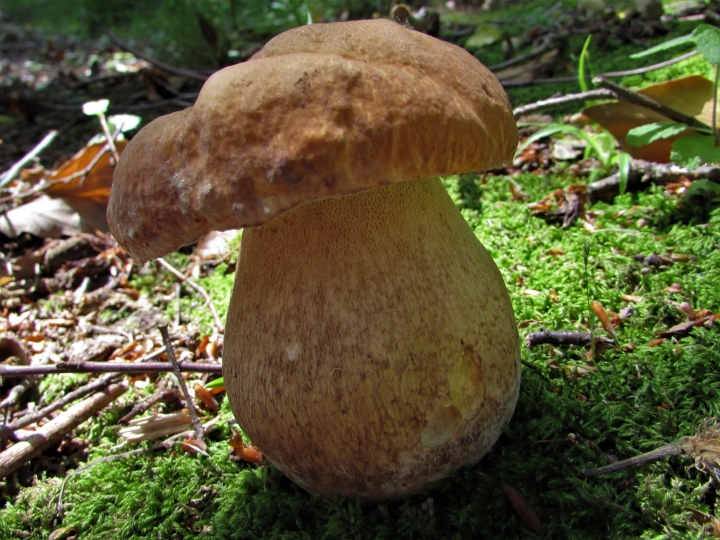















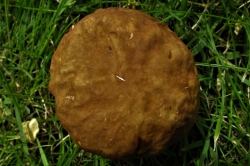
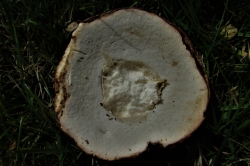
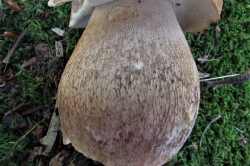
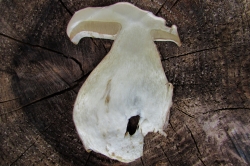
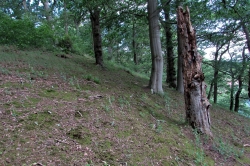
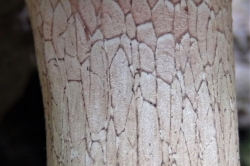




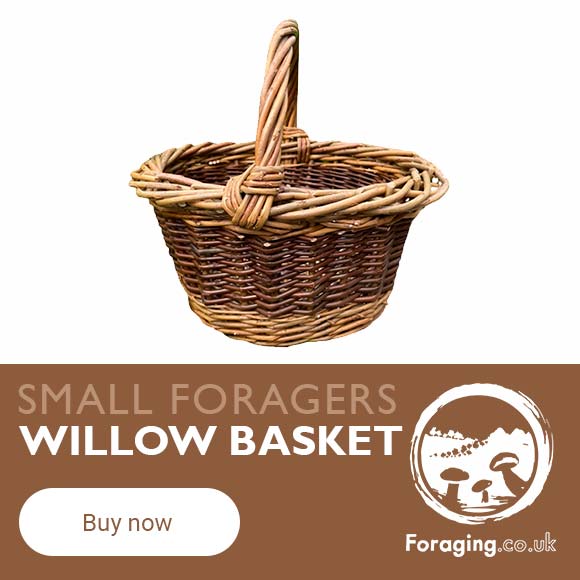

4 comments for Summer Bolete
Hello, I found some of these this morning and believe it to be summer bolette(boletus Aestivalis). This was found in long grass and fern within 100m of a tidal river; the nearest trees are approx 400m away. I have had a little nibble and it tastes good! I have a book by Carluccio but unfortunately there is no picture to help identify this and your website picture is also inconclusive to me. I would appreciate any help.
Thanks.
Hi David, it’s a bit late I know but if you can send in photos of the stem, gills and cap I’ll do my best. The Summer Bolete can be very hard to differentiate from the Penny Bun but the two of them are quite distinct from other Boletes and both great finds.
Hi, well after a decade, I finally realised that the two patches of Boletus in my area of South Wales were actually Summer Cep.
I couldn’t understand, why we would often have a good flush following the rains in a July heatwave: For them to then tail off completely during August or early September when Cep should just be starting their season.
I finally realised that I had to start looking for them in June not autumn. I find them amongst Beech and Birch adjacent to patches of Chanterelles following Summer downpours.
Thank you for sharing your knowledge and experience!
I spotted Boletus reticulatus in the Frimley Green’s woods in Hampshire.
Regards
Omid